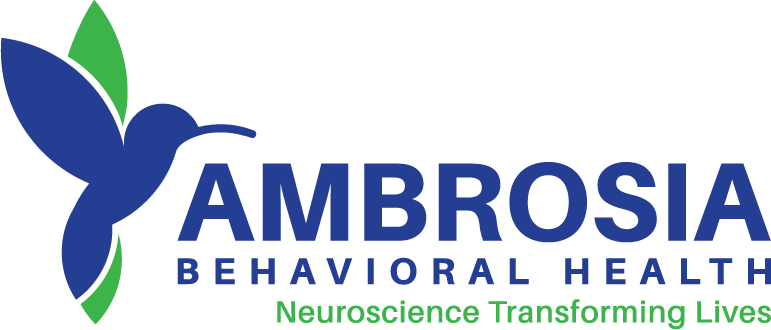Bipolar Treatment Centers In Florida
Living with bipolar disorder is a challenge for anyone. Trying to cope with this mental illness without receiving proper help complicates it even more. When you make the brave decision to seek help from bipolar disorder treatment centers, you can begin to start living a happier and healthier life. Neuroscience Research Institute has bipolar treatment centers in Florida that allow you to manage your symptoms and focus on more important things in your life.
What is Bipolar Disorder?
Bipolar disorder is a mental health condition that affects how people think, feel, and behave. Specifically, it is marked by extreme shifts in mood called manic episodes and depressive episodes. Manic episodes are marked by experiencing emotional highs of mania and hypomania that consist of exacerbated good moods and bursts of energy.
Depressive episodes consist of feeling very down, hopeless, and drained of energy. Depressive episodes are more commonly experienced than manic ones. The amount of time a mood range lasts varies. It can last several hours, days, or months at a time. There are often periods between manic and depressive episodes during which a person feels emotionally leveled out.
According to the National Institute on Mental Health (NIMH), bipolar disorder affects approximately 2.8% of adults in the United States. Despite its frequency, seven out of ten patients with the disorder will be misdiagnosed at least once. Untreated bipolar disorder can negatively impact a person’s relationships, ability to work and attend school, and enjoy daily activities. Bipolar disorder is a lifelong condition but can be capably managed with an effective treatment plan from bipolar treatment centers in Florida.
Signs and Symptoms of Bipolar Disorder
When a person has manic episodes they may experience intense feelings of euphoria, impulsivity, and excitement. It is not uncommon for people in a manic cycle to go without sleep for multiple days, talk a mile a minute, and be hyperactive. During manic episodes, people commonly experience racing thoughts, being easily distracted, an exaggerated sense of self-confidence, and feeling jumpy or wired. Also, mania may cause episodes of psychosis.
Hypomanic episodes are similar to manic episodes but tend to be less severe. Often, someone in a hypomanic cycle will be the life of the party, taking an intense interest in people, places, and ideas. Specifically, the person may feel a boost in energy, self-confidence, and creativity. Hypomania is more manageable than mania, allowing individuals to continue with their normal day-to-day lives.
Depressive episodes are the down cycle of bipolar disorder. In fact, symptoms are severe enough to cause noticeable disruptions to an individual’s daily activities, such as work, school, relationships, or social activities. Depressive episodes include five or more of the following symptoms:
- Fatigue
- Insomnia or sleeping too much
- Restlessness
- Slowed behavior
- Changes in appetite
- Significant weight loss or gain
- Loss of interest in activities that are usually pleasurable
- Depressed mood
- Decreased ability to think, concentrate, or make decisions
- Suicidal ideation
Four Types of Bipolar Disorder
- Bipolar I
- Bipolar II
- Cyclothymia
- Other types
Bipolar I
Bipolar I is diagnosed when an individual experiences at least one manic episode that is either preceded or followed by a depressive episode. Often the symptoms are more intense and can result in periods of psychosis.


Bipolar II
Bipolar II is diagnosed when an individual experiences at least one depressive episode lasting two or more weeks. Generally, bipolar II disorder sufferers will exhibit short-term hypomania symptoms rather than manic symptoms after a depressive episode. It is thought that this disorder affects women more often than men.
Cyclothymia
Cyclothymia is diagnosed when an individual experiences both manic and depressive symptoms. For the most part, cyclothymia symptoms tend to be less severe than bipolar I or II. People with cyclothymia can go several months without noticeable symptoms.


Other Types of Bipolar Disorder
Other types of bipolar disorder are defined by an individual experiencing symptoms as a result of drug use, co-occurring mental health issues, certain diseases, or other environmental factors.

Causes of Bipolar Disorder
Oftentimes, individuals suffering from bipolar disorder have at least one other diagnosable mental illness, such as an anxiety disorder, attention-deficit/hyperactivity disorder (ADHD), or post-traumatic stress disorder (PTSD). Because of the prevalence of several mental illnesses in one person, many bipolar disorder treatment centers treat multiple conditions. In addition, many also treat substance use disorders, which co-exist with mental illnesses in many cases.
Why Do I Need Help from Bipolar Treatment Centers in Florida?
When left untreated, bipolar disorder can lead to unfortunate outcomes. As with other mental illnesses, individuals with bipolar disorder are likely to seek ways to numb their pain with harmful substances, like alcohol and drugs. In particular, those without a solid support network or suitable management of their illness may self-medicate as a temporary escape route. Commonly, this leads to addiction, which significantly worsens the problem. Additional complications that can result from bipolar disorder include:
- Struggling at work or school
- Damaged relationships
- Suicidal problems
- Financial issues
- Changes in weight
- Heart problems
- Increased anxiety
Therapies Used in Bipolar Treatment Centers in Florida
Depending on a variety of individual factors, your treatment plan may include:
- Medication management services
- Individual, group, and family therapy sessions
- Experiential therapies such as dance/movement and art
- Dialectical behavior therapy (DBT)
- Cognitive-behavioral therapy (CBT)
- Acceptance and commitment therapy (ACT)
- 12-Step principles
- Motivational interviewing



